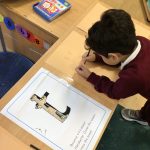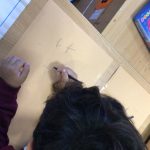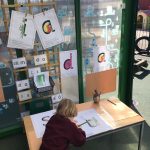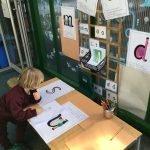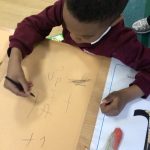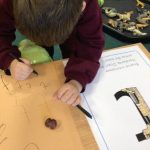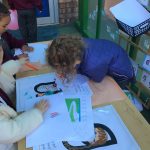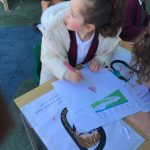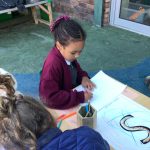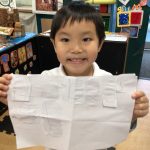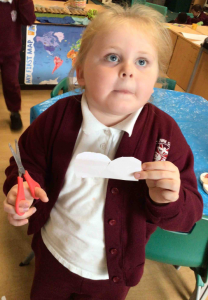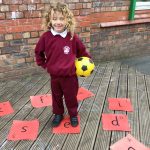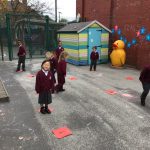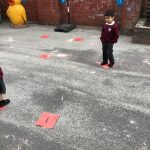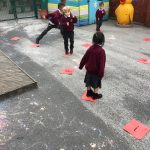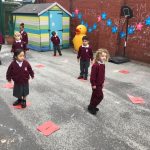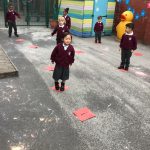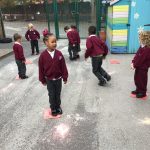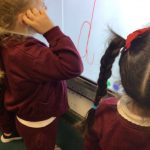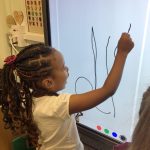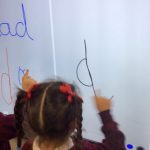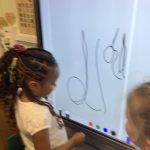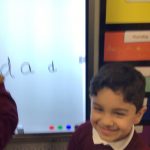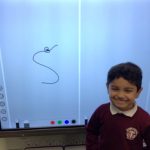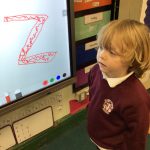Nursery
I will understand that print has meaning, print can have different purposes, we read English text from left to right and from top to bottom, the names of the different parts of a book and page sequencing. I will be able to spot and suggest rhymes, count or clap syllables in a word and recognise words with the same initial sound. I will engage in extended conversations about stories, learning new vocabulary. I will use some of my knowledge about print and letters in my early writing. I will be able to write some or all of my name. I will be able to write some letters correctly.
Autumn 1
Enjoy and join in with songs and rhymes.
Have favourite books, repeating words and phrases from familiar stories.
Ask questions about the book, making comments and sharing their own ideas.
Notice some print, such as the first letter of their name, a bus or door number, or a familiar logo.
Enjoy drawing freely.
Add some marks to their drawings, which they give meaning to.
Add marks to their picture to stand for their name.
Reception
I will read individual letters by saying the sounds for them. I will blend sounds into words so I can read short words with known letter-sound correspondences. I will read some letter groups that each represent one sound and say sounds for them. I will read some common exception words (matched to the Read Write Inc programme). I will read simple phrases and sentences made up of words with known letter-sound correspondences and a few exception words. I will become a confident, fluent reader who enjoys and understands the books I am reading. I will form lower-case and capital letters correctly. I will spell words by identifying the sounds and then writing them. I will write short sentences using a capital letter and full stop. I will be able to re-read what I have written to check that it makes sense.
The level of development a child should be expected to have reached by the end of the EYFS is defined by the Early Learning Goals.
ELG: Comprehension
• Demonstrate understanding of what has been read to them by retelling stories and narratives using their own words and recently introduced vocabulary.
• Anticipate – where appropriate – key events in stories.
• Use and understand recently introduced vocabulary during discussions about stories, non-fiction, rhymes and poems and during role-play.
ELG: Word Reading
• Say a sound for each letter in the alphabet and at least 10 digraphs.
• Read words consistent with their phonic knowledge by sound-blending.
• Read aloud simple sentences and books that are consistent with their phonic knowledge, including some common exception words.
ELG: Writing
• Write recognisable letters, most of which are correctly formed.
• Spell words by identifying sounds in them and representing the sounds with a letter or letters.
• Write simple phrases and sentences that can be read by others.
Across the EYFS the environment both indoors and out will support my interest in reading and writing and will give me the opportunity to embed the skills I am being taught. I will have the chance to read on my own, with the support of my teacher and in small groups on a regular basis. I will take home a library book of my choice which will help me to develop a love of and habit in reading. Sharing a book will also develop my vocabulary and language development as will picture books (books without words). When I am able to blend phonemes together I will take home a reading book which will be matched to my phonic phase and which I will be able to read fluently and confidently. This will give me the opportunity to become a confident reader whilst embedding my phonic skills. In school I will have a more challenging reading book which my teacher will support me with.
A small set of flashcards will be sent home on a weekly basis which will be matched to the phase in phonics I am working within. This will support my skill of blending to read. I will also be given some “tricky/exception” words to learn.
My family will be made aware of the week’s phonic focus within the weekly newsletter. There will be a parents/carers workshop led by the Phonics Lead M Sargent and the EYFS Lead C Riley, where information will be given on how reading and writing is taught in school and how it can be supported at home. Parents and carers are invited to “stay and read” weekly sessions when appropriate.
I will visit the local library with my friends and my teacher and will be encouraged to become a member and use it regularly to develop a love of reading.
“Read, Write Inc” is a programme (used from September 2020) which provides a structured and systematic approach to teaching literacy. Our aim is to create fluent readers, confident speakers and willing writers who will be able to meet the higher expectations of the National Curriculum as they leave Reception (and the EYFS curriculum) and move to Year 1. Read, Write Inc begins in the summer term in Nursery and continues in Reception.
https://www.booktrust.org.uk/books-and-reading/tips-and-advice/
Autumn Term
Literacy
Children in Reception will be learning to:
- Read individual letters by saying the sounds for them.
- Blend sounds into words, so that they can read short words made up of known letter– sound correspondences.
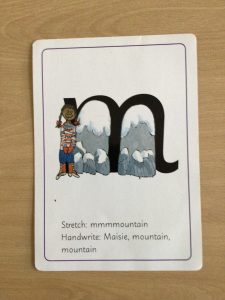 |
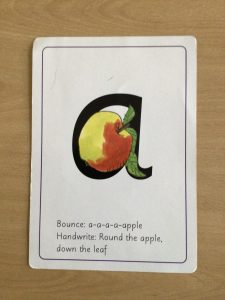 |
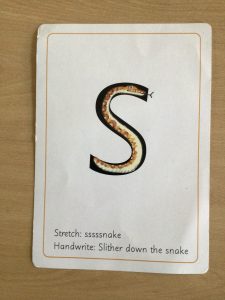 |
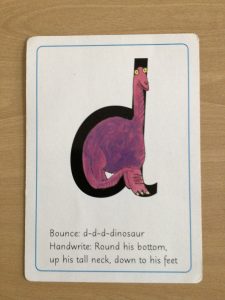 |
Reception begin to develop their literacy knowledge and skills through reading individual letters by saying the sounds for them. We follow the Read Write Inc. programme for the teaching of phonics, which includes a picture for each letter and a rhyme for writing each letter. All of which supports children in developing their phonic knowledge and skills.
“I’ve made an ‘m’ , a Maisie mountain m”.
Reception are developing our literacy skills through reading individual letters by saying the sound for them in our outdoor area. We work on identifying single letter sounds by running to the letter that makes the sound that we hear and saying the sound that a letter makes for other children to run to that letter.
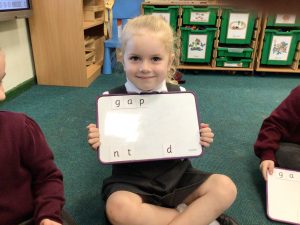 |
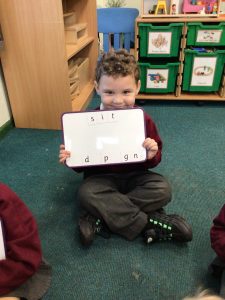 |
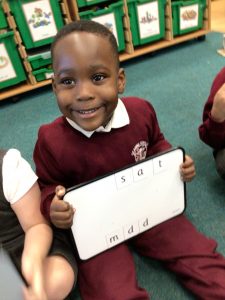 |
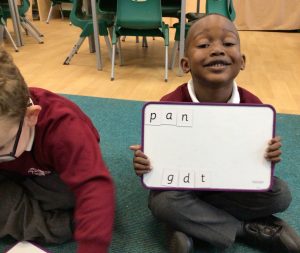 |
Being able to read individual letters means we can begin blending them together to make words. Fred Talk Read the Word g-a-p gap this is a vital step when learning to read.
Reception are developing our literacy skills through applying our knowledge of single letter sounds to segment to spell CVC words on our interactive whiteboard.
Reception are developing our literacy skills through independently initiating role play of the teaching of Set 1 sounds, drawing the picture that represents the sound and saying the memorable phrase taught to support letter formation e.g. ‘slither down the snake’ for the letter/sound ‘s’.

